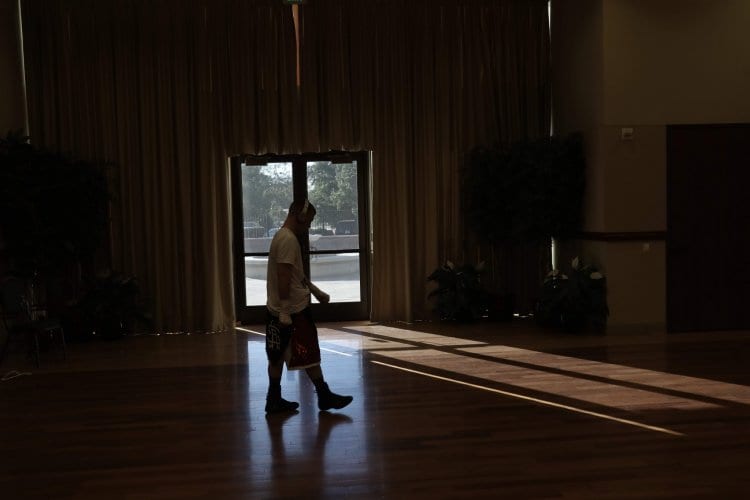Being A Fight Fan Is Now A Part-Time Job | Rant
Over the past three months we have seen two pay-per-views, one at 74.99, the other at 39.99, and now next month we have yet another at 74.99, roughly $200 allocated to boxing in just three months, right before the tax season. Add to the fact that, DAZN wants $100 a year for a subscription to boxing content, and ESPN+ wants roughly $75 a year, and you are looking at no longer entertainment, you are looking at a new monthly bill you have to pay just to be a fight fan.
Sure, you see with the NBA, NFL, or other sports leagues, content at higher fees to see marque games, and such weekday games, yet, they don’t put things you want to see behind paywalls. The extreme enthusiasts of the sport have to pay extra for their addiction, and the playoffs or meaningful events in each sports history go to the masses as it is the best representation of the product, as well as essentially an ad for how captivating the league is.
In boxing it is almost the opposite, the best representation of the sport is often behind a paywall, and the most uninteresting will be either on a stream or even on television. As a fight fan we have been trained that we need to pay for the best, and if a fight is on pay-per-view, that makes it better.
The UFC used to be better at this, but since the ESPN deal, they now have moved to a model of oversaturation, in which they have become a content-producing machine, whipping out fights left-and-right, and the lack of time to digest each fight, along with the means to have to navigate ESPN+ for a UFC fight, or buy a PPV using ESPN+ rather than an at-home distributor, now takes education. Sure it might not be a lot, but it is more so than it used to be, and it comes down to the enthusiasm one has for the product rather than a spur-of-the-moment purchase. Now add to the fact, that most of the UFC’s stars are either aging out of the sport, or trying to box, which also adds to the problem.
Boxing doesn’t have the loyal fanbase that MMA does, and that is for many reasons, we have very few public figureheads. Sure, MMA figures of Dana White and Joe Rogan are pretty embarrassing, they still accomplish the task of seemingly beer-drinking dudes who want to talk you through a fistfight. Boxing suffers from being in the past, the boxing media has too many know-it-all’s that are too quick to be mean to fans who don’t know as much, and the creative angles to stories only seemingly come from Greg Bishop, Mark Kriegel, Abe Gonzalez, Jeremy Herriges, and Anthony Saldana. The boxing telecast experience is often rough around the edges, and looks less than compared to other products on TV.
In short, boxing asks a lot, doesn’t always make it easy for you to know what network to tune in to, and the sexy match-ups we want, oftentimes are not given to us until it is after a fighter has reached as Bill Simmons would say their “apex mountain” of earning potential, and a fight will be revisited. Sometimes we get to true greats fighting in their prime, but often it is with the belief a fighter is shot, less than or not as good as they once were. The sport of boxing is a beautiful sport, but to cover it from a top-down sport is so boring, the interest for me comes in the development of fighters, as once at the top fighters have to get as much money as possible, as this is their chance to make it in life, and as most don’t have a plan b.
I was sitting here thinking about how much boxing I watch when setting my goals for 2022, and it was staggering. To be truly knowledgeable about the sport, you have to consume six-or-so-hours of boxing content on the weekend, often more, be aware of the start time, be aware of social media accounts that clue you in on fights that you may have missed, and even then with all that time invested you might have to invest money as well. Boxing is like that awful children’s book “The Giving Tree”, in which the tree gives and gives, and someone just keeps taking, it is awful view of the world, in my opinion, and though I love the sport, I get so burnt out on the industry as boxing, well fight sports as a whole are more of businesses than sport.
This might be why only five-or-six writers in the U.S. cover boxing full-time. The interest isn’t there, the U.S. has more compelling sports, with more compelling athletes, who are seemingly available weekly as opposed to in limited spurts. The best in our sport only fight two times a year at most, the best in other sports appear, at least 15 weeks in a row in football, and half a year, if not more in baseball and basketball. The invisible nature of boxers, who are out of the ring far too long without a true nationwide fanbase makes their absence get forgotten.
A great example of a boxer who used media to stay in the public eye is Shawn Porter. I feel Porter through doing television, never left the conversation since he was so visible, and even if he fought one-to-two times a year he was still relevant. Boxers who are at the top of the sport such as Usyk, Inoue, Crawford, Spence, and more seem far too irrelevant for all that they have achieved. It is no wonder that Canelo Alvarez, a Mexican boxing icon, and Tyson Fury, who has crossed over to pro wrestling amongst many other avenues are so influential – they have seemingly rejected traditional boxing media and it is working.
Look at Jake Paul. His following is strong, and he is not catering to traditional media, and getting the same viewership ratings as established boxers. While some complain, I think people should learn, since boxers who have talent should look to patterns of what Paul is doing, as Paul is bringing new life into the sport of boxing, as boxing is so far behind in terms of marketing, and using social media to attract viewership in teenagers.
Now let’s think about the case of Terence Crawford. Crawford is from Omaha, Nebraska, somewhere, that if you’re not from there, would simply refer to as “the middle of nowhere”. Crawford arrived as a truly elite fighter in the past decade, winning world titles in three divisions, becoming undisputed in the process at super lightweight, and looking to be one of the best fighters of his era. Yet, Crawford is still rather anonymous to the culture at large outside of boxing, if a musician or actor references Terence Crawford, it is not a given, that the reference would be to a boxer. In short, being a great boxer in 2022 doesn’t make you star as it once did in boxing. With Floyd Mayweather and Manny Pacquiao, and those who follow after them, you have to be able to entertain, be personable, and offer more than fighting, especially in an era, in which we know so much about athletes via social media.
Crawford is a case in which too much boxing, and/or fighting spread across so many platforms, has confused viewers to what is truly noteworthy, and beyond that, the belief that the fighters who world titles are not the best, because of hideous acts like Myke Fox vs. Gabriel Maestre, we no longer have any minds in boxing that the fans feel are shepherds of the sport. Whether right or wrong, boxing seemingly now seems interchangeable with the word corporation, and even worse, we seemingly make little effort to change that. Fighters test positive for PEDs yet we hear reasons why it is okay they can fight, fighters get world title shots over others not on achievement, but based on how much money they can make which sounds like payola, and add to that the love affair with the undefeated record, which stems from the Floyd Mayweather era.
Boxing in 2022 is in a better spot than it was in 2016, but it is also in a worse spot. We have seen two different major investments into boxing’s U.S. market occur. Al Haymon’s Premier Boxing Champions revolutionized boxing to network television in the last decade, and Eddie Hearn was granted a huge chunk of change for DAZN to start boxing on the network. Both have had positives and I have seen growth – as boxing has stayed on network television since the PBC started broadcasting fights on television, and I credit them with that, and DAZN has built a strong global boxing presence, but neither dramatically changed the sports landscape. All that money invested, and boxing still feels like a second-tier sport behind the major American sports.
Even the successful UFC feels watered down, and old at this point. Dana White’s rants used to be exciting and fun, and now he seems a bit tired of the nonsense. The fight media has become more about gossip since the social media distributors that have far too much power, favor heavily searched names over substance. Hence, the coverage of the sport, has turned into die-hard fans, willing to lose money to get up-close access to fighters. In terms of narrative and growth, this hurts the sport, as the boxers learn to check out fight week since most of the questions are generic, and the average fan learns to watch mostly content from the promoter directly as it is the most professional, yet is a very “state-run” view of the fighter and promotion.
In summary, becoming a fight fan now takes up about 20-hours-a-month and at least a couple thousand dollars a year just to watch things live and be entertained. This is a far bigger ask than other sports, and it is no wonder why boxing instead of growing becomes stagnant or even retracts at times.
For me, what is still refreshing to see is the joy of seeing young fighters sign with a major promoter, young fighters traveling to nationals to compete, and doing well, but how many people enjoy that. Given my site analytics probably about a couple thousand, and that isn’t sustainable in terms of a major network that is all about ratings. Boxing needs something new.






